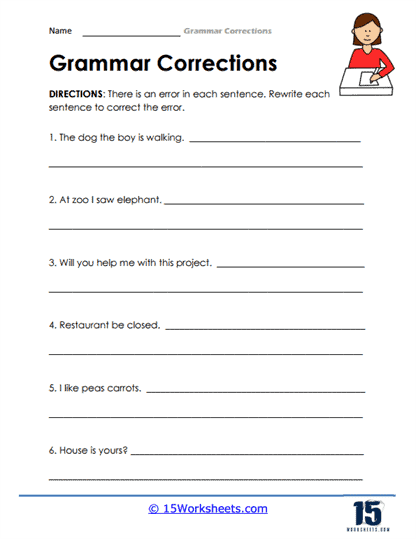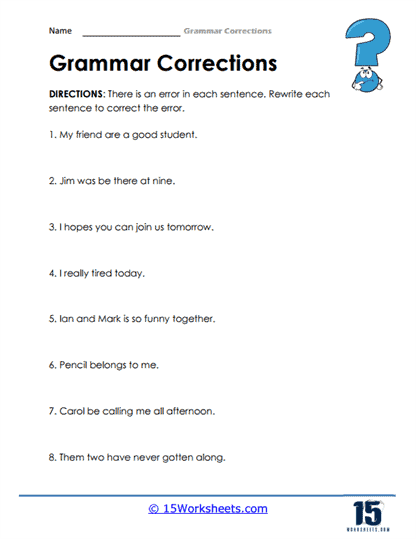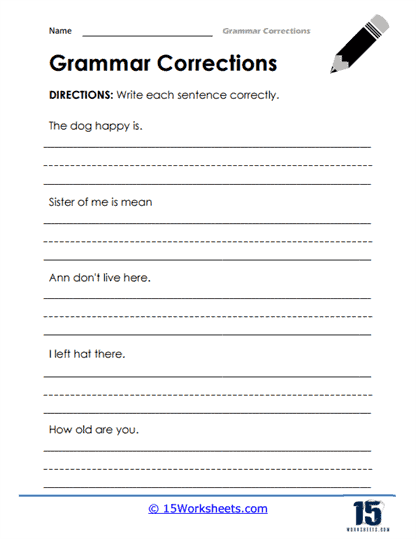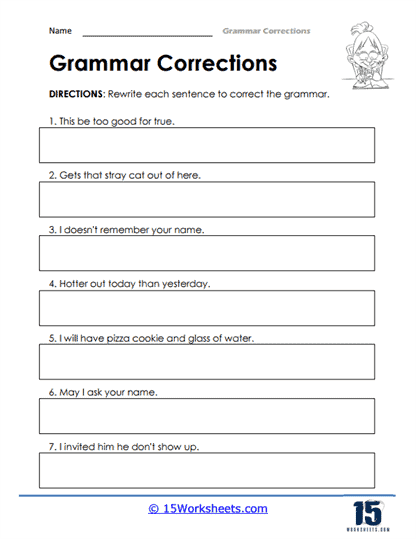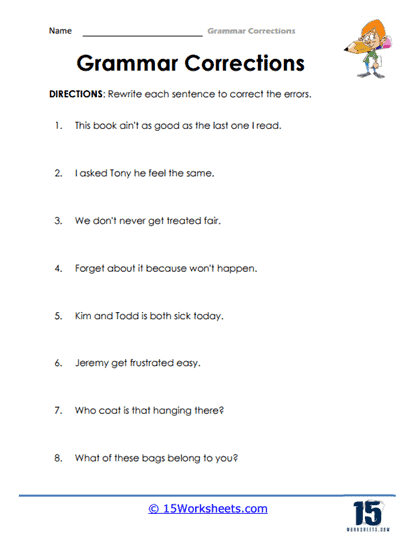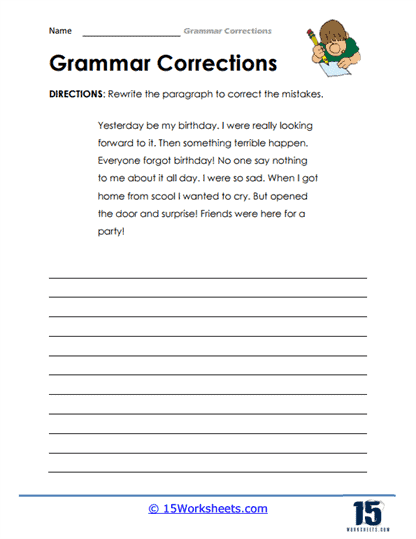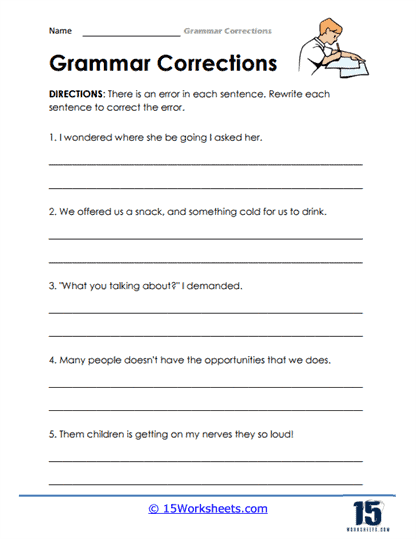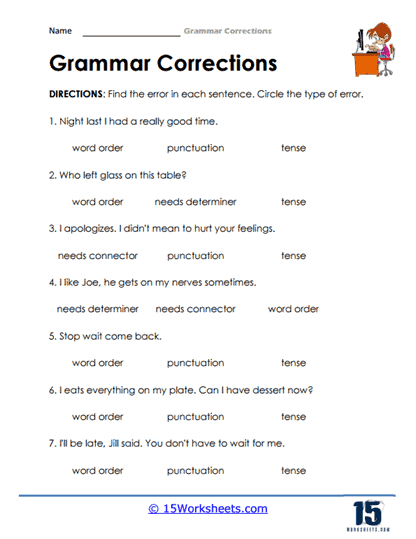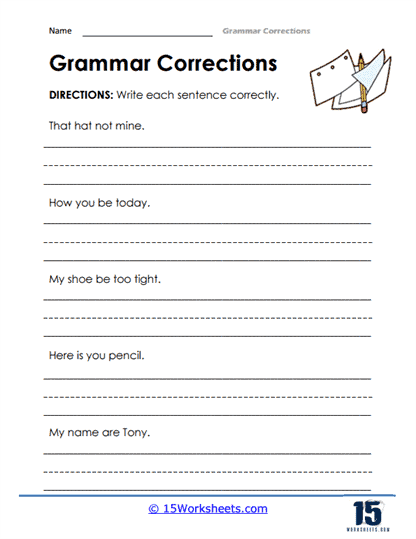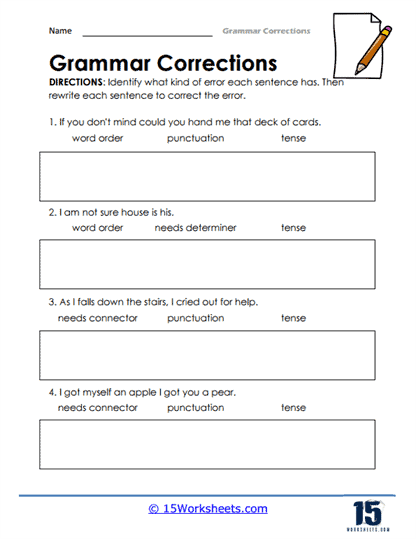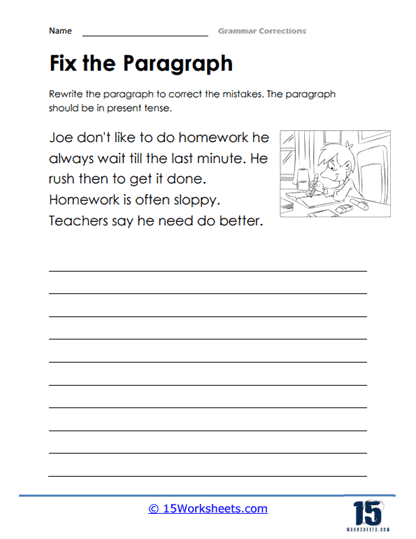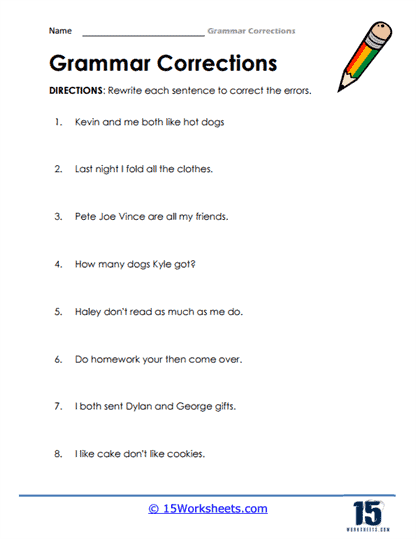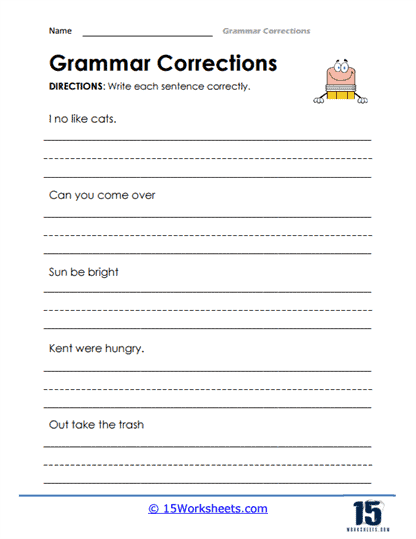Grammar Corrections Worksheets
All About These 15 Worksheets
These Grammar Corrections worksheets are designed to help students improve their grammar skills by correcting or rewriting sentences with common mistakes. The worksheets cover various aspects of grammar, including subject-verb agreement, verb tenses, sentence structure, punctuation, and more. Through a variety of exercises, students will learn how to identify and correct grammar errors, and they will also practice writing their own sentences with correct grammar. Through these worksheets, students will:
- Correct and rewrite sentences with grammar errors;
- Identify the mistakes in incorrectly written sentences;
- And transform paragraphs or short passages to reflect correct grammar.
By completing these worksheets, students will develop greater confidence and proficiency in using correct grammar in their spoken and written English, which will help them communicate more effectively and professionally.
How to spot grammar errors in sentences
Here are some tips that teachers can give to their students to help them spot grammar errors in sentences:
- Read the sentence slowly. Take your time when reading the sentence and try to understand its meaning. This will help you identify any grammatical errors that may affect the sentence’s clarity or meaning.
- Identify the subject and verb. Identify the subject and verb in the sentence and ensure that they agree in number and tense. For example, “He walks” is correct, but “He walk” is incorrect.
- Check for proper punctuation. Check that the sentence has proper punctuation, such as commas, periods, and apostrophes. Incorrect punctuation can change the meaning of the sentence or make it difficult to understand.
- Look for sentence fragments. Ensure that the sentence is a complete thought and not a sentence fragment. A sentence fragment is a group of words that does not express a complete thought, such as “Walking down the street.”
- Check for run-on sentences. Check that the sentence is not a run-on sentence, which occurs when two or more sentences are written as a single sentence without proper punctuation. For example, “I went to the store I bought some milk” is a run-on sentence.
- Pay attention to verb tenses. Ensure that the verb tense is appropriate for the context of the sentence. For example, “She will go to the store” is correct for future tense, but “She will went to the store” is incorrect.
By following these tips, you can improve your ability to spot and correct grammar errors in sentences.
Why do students need to learn correct grammar?
Learning grammar corrections can benefit students in several ways:
- Improved communication – Learning correct grammar helps students communicate more clearly and effectively, whether they are speaking or writing. Correct grammar ensures that their message is conveyed accurately, avoiding confusion or misinterpretation.
- Enhanced credibility – Proper grammar is often associated with intelligence, professionalism, and attention to detail. By using correct grammar, students can enhance their credibility and project a more polished image in their interactions with others.
- Increased confidence – Knowing that one is using proper grammar can boost confidence levels, both in social and academic situations. When students have confidence in their ability to communicate effectively, they are more likely to speak up in class, participate in discussions, and express their ideas.
- Better writing skills: Learning grammar corrections can improve students’ writing skills, including their ability to organize their thoughts, write clearly, and express their ideas in a logical and coherent manner. These skills are essential for success in academic and professional settings.
- Improved critical thinking – Correcting grammar errors requires students to think critically and analyze the structure and meaning of sentences. This type of analytical thinking can help students develop problem-solving skills that are valuable in a wide range of contexts.
Overall, learning grammar corrections can have a positive impact on students’ academic and professional success, as well as their personal growth and development.



